Where to See Wildlife in Grand Teton National Park
One of the great joys of spending time in Grand Teton National Park is the amazing opportunity to see wild animals. From bison, elk and moose to black and grizzly bears, yellow-bellied marmots and countless birds, the wildlife watching in Grand Teton National Park is among the best in the national park system.
In this post, I’ll tell you about my favorite places to see wildlife in Grand Teton and which animals are commonly seen there.
7 Great Places to See Wildlife in Grand Teton National Park
This post about the best places to see wildlife in Grand Teton National Park contains affiliate links. You can read more about our Terms of Use / Disclosure here.
Home to a remarkable abundance of large animals, including most of North America’s largest land mammals, Grand Teton is also super-easy to get around in.
There are essentially two main roads through the park: Route 26/89/191 and the Teton Park Road. You can easily combined both roads to create a phenomenal loop drive, which is about 42 miles long.
Driving the Grand Teton Scenic Loop Drive takes you past the majority of the top attractions in Grand Teton National Park, some of which might require a short walk, detour or hike.
Additionally, a number of scenic overlooks and turnouts offer epic views of the Jackson Hole valley and the majestic Teton Rang
. Especially in the morning, a few of those viewpoints provide some of the best Grand Teton wildlife viewing opportunities. You can also spot animals in Grand Teton along its lakeshores and surprisingly close to some major and busy areas.
Here are my favorite places to see wildlife in Grand Teton National Park!
1. Oxbow Bend Turnout
- Look for: elk, moose, beavers, muskrats, river otters, American white pelicans, great blue herons, bald eagles and ospreys
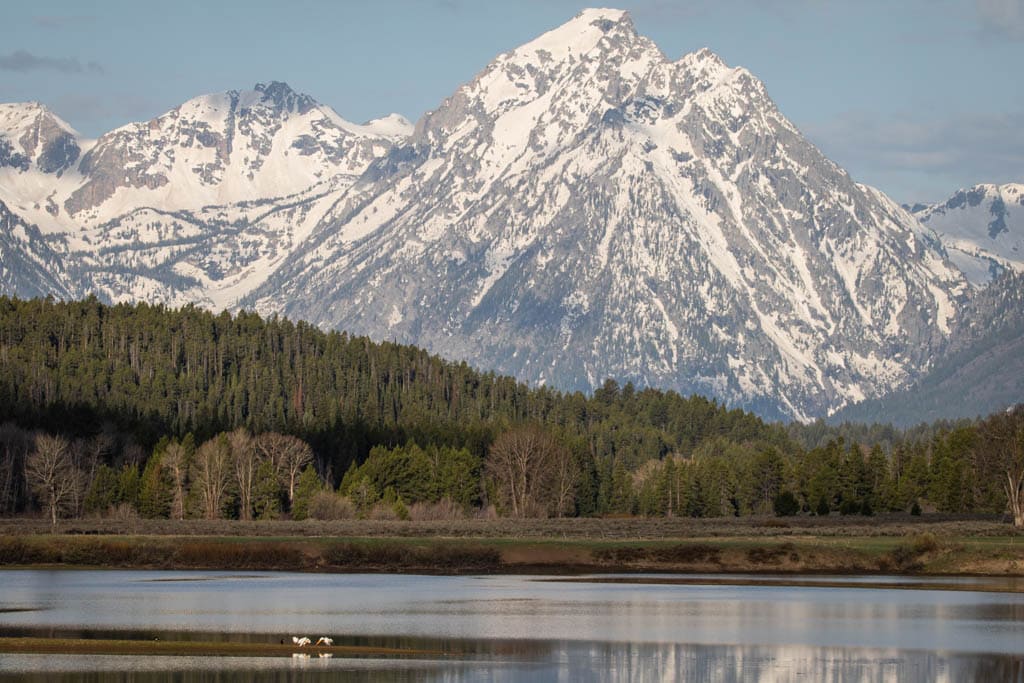
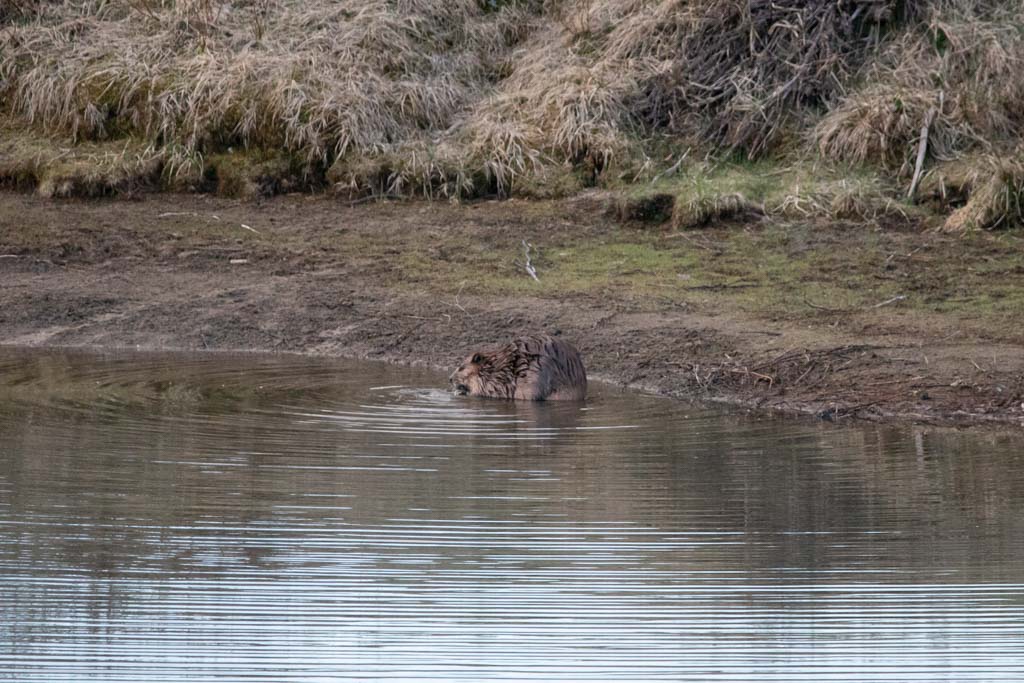
Arguably the most picturesque location in all of Grand Teton, the Oxbow Bend Turnout is what you might call “postcard-perfect.”
This spot gets its name from a wide curve in the Snake River, creating a panoramic view of the river in both directions, while the Teton Range provides a magnificent background.
For all its scenic beauty, this is also easily one of the best places to see wildlife in Grand Teton National Park.
At dawn, still water often reflects the Tetons, while the shrieks, tweets, chirps, and songs of many waterfowl and other birds penetrate the silent morning air.
Moose may be seen foraging among willow thickets on the riverbanks. Beavers, muskrats and river otters live in and along the river.
Sometimes, if you’re lucky, you can see a bald eagle or osprey (try to) pluck a fish right out of the water.
Oxbow Bend is located between Jackson Lake Junction and Moran Junction, along the northern part of the Teton Park Scenic Loop Drive. It’s no more than ten minutes from either Signal Mountain Lodge or Jackson Lake Lodge.
2. Jenny Lake
- Look for: black bears and grizzly bears, moose
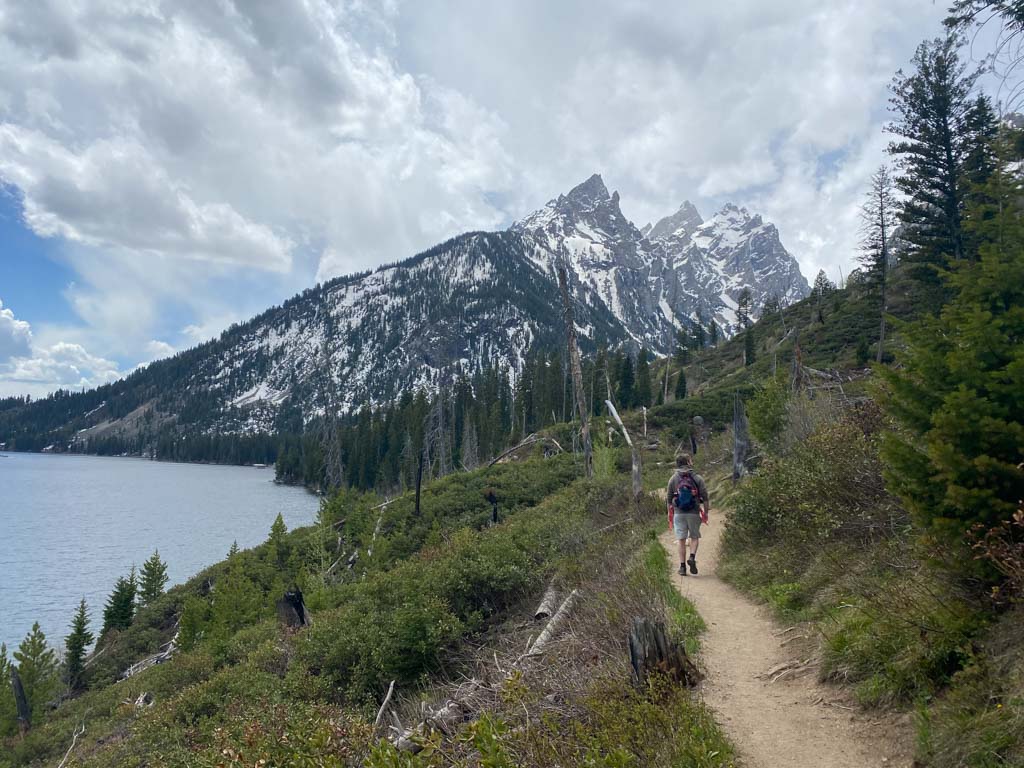
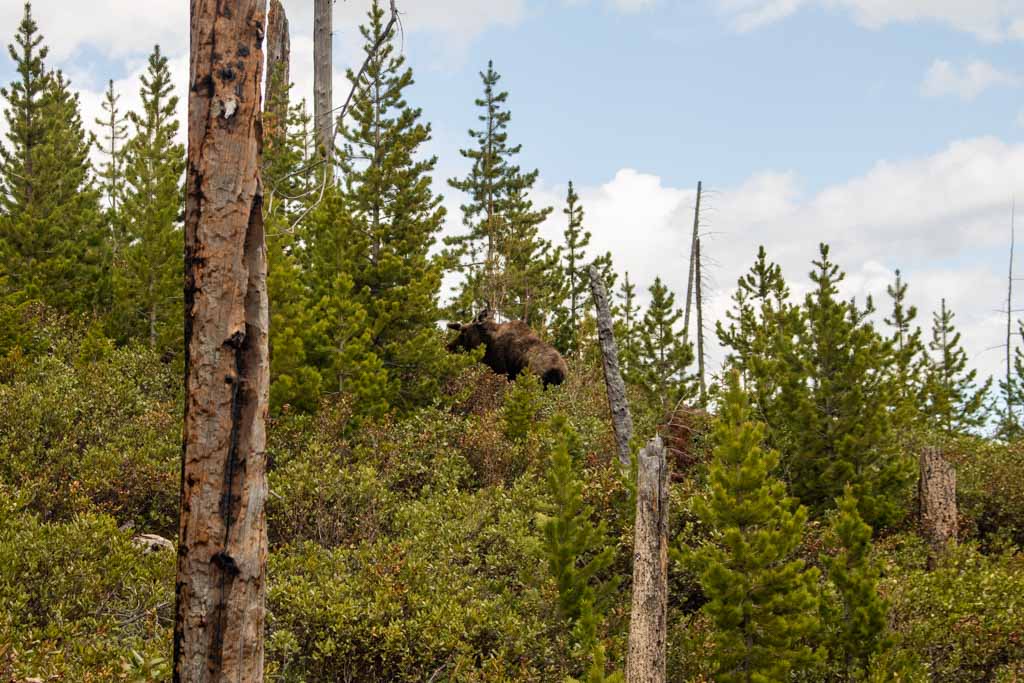
One of the busiest areas in the park, Jenny Lake is home to a visitor center, historic buildings, a store, restrooms, several trails and a boat dock.
It is also home to many grizzlies, black bears and other Grand Teton wildlife.
While you probably won’t see any large animals if you just stick to the paved pathways and visitor facilities, venturing a bit further away from the hustle and bustle puts you well into the heart of wildlife country.
The Jenny Lake Trail, for example, is one of the most popular trails at Grand Teton, looping around Jenny Lake and offering spectacular views of the Tetons.
This trail can also be combined with a shuttle boat ride. Other fun hikes in the area are the String Lake and Leigh Lake Trails.
As busy as they are, those trails do run through moose and bear habitat. Encounters are quite common, so make sure that each member of your group has their own bear spray cannister and knows how to use it.
We saw a black bear casually foraging at the String Lake Trailhead—literally next to the restroom—and spotted a moose standing in a patch of trees less than 20 yards off the Jenny Lake Trail.
Remember that park regulations require you to stay at least 100 yards from bears and wolves, and 25 yards from all other animals. If you encounter wildlife closer than that, slowly back away immediately. Never approach wildlife and NEVER run from a bear. See the end of this post for more information about how to safely observe and recreate among wildlife in Grand Teton National Park.
3. Antelope Flats Road
- Look for: bison, pronghorn, elk, sage grouse, American kestrels and coyotes
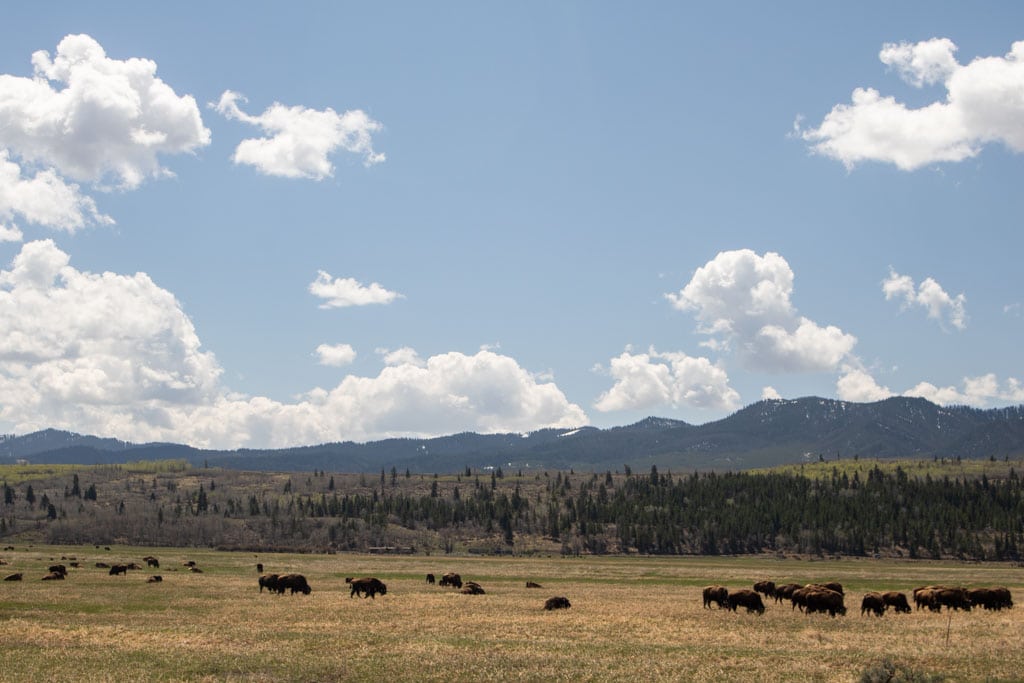
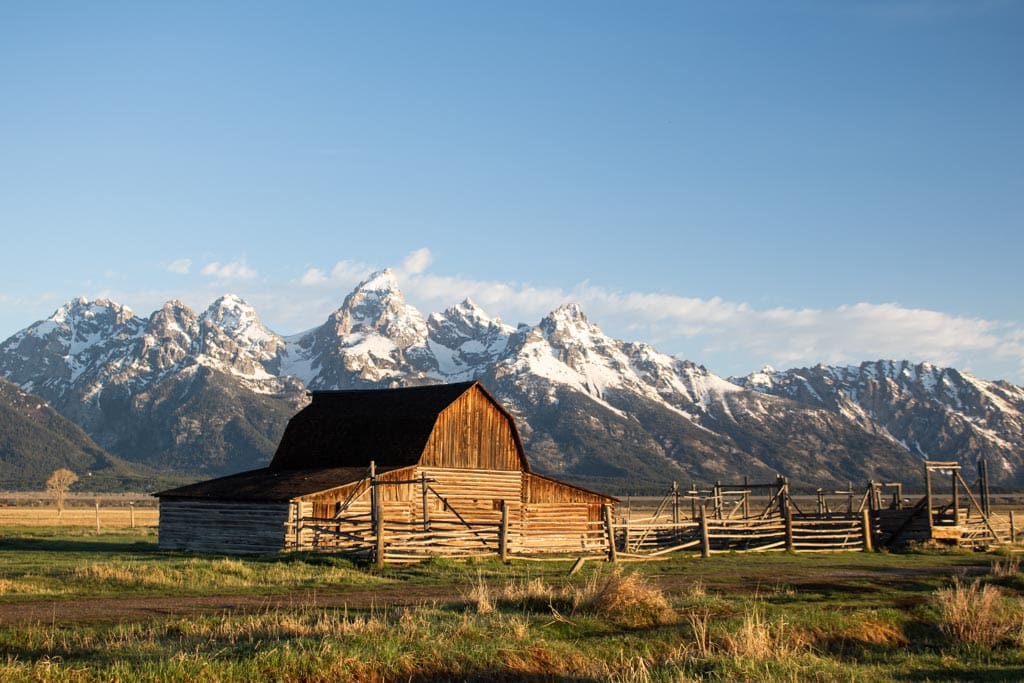
The Antelope Flats Road is off Route 26/89/191 about a mile north of Moose Junction. This road runs across a large sagebrush plain and past the famous Mormon Row Historic District, which is home to the iconic and much-photographed T.A. Moulton Barn and John Moulton Barn.
Along this road, as well as throughout Mormon Row, you can see a variety of sagebrush wildlife.
The sagebrush flats plant community is one of Grand Teton National Park’s five life zones, home to its own particular set of native animals. The other four life zones are the alpine, forest, wetland and wet meadow, and lake, pond and river zones.
Animals that thrive in these barren-looking steppe-like flats include some of America’s largest wildlife. This is a great place to see bison, elk and pronghorn, all three of which are among the most iconic mammals of the national parks.
Sage grouse are occasionally spotted here, too, while American kestrels and coyotes hunt small animals like ground squirrels, mice and grasshoppers.
4. Blacktail Ponds
- Look for: moose, elk, beavers various ducks and other birds
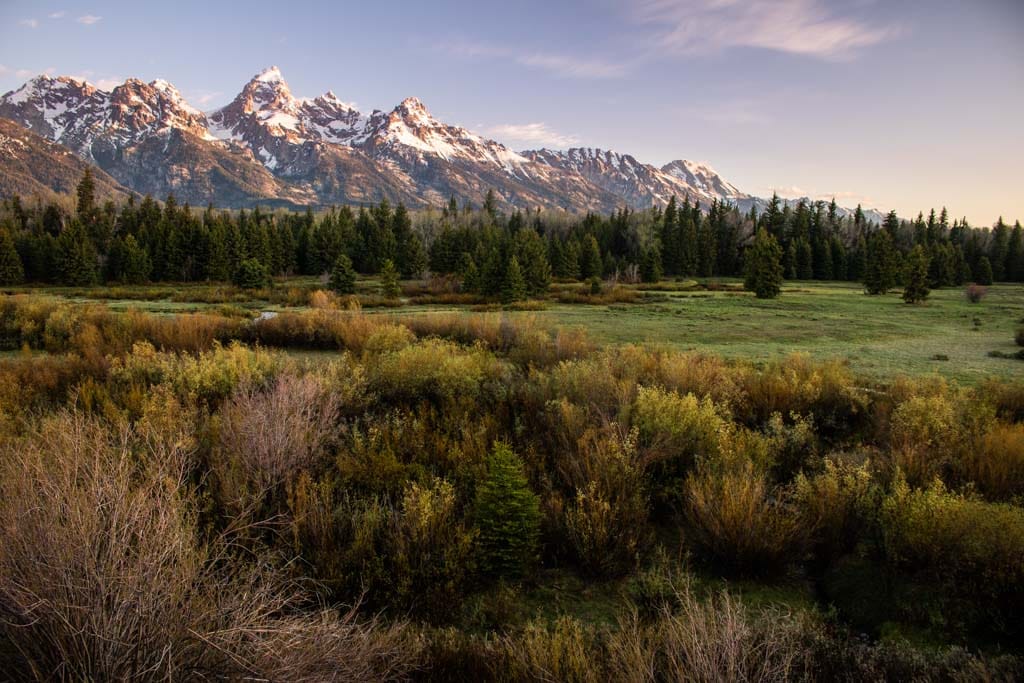
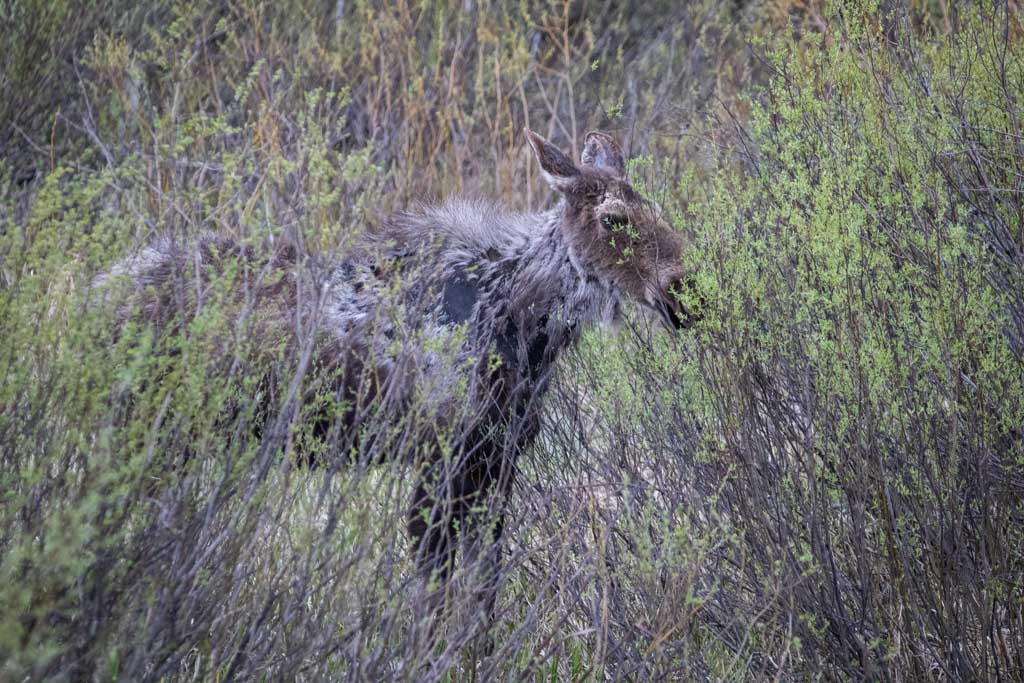
Often skipped by visitors, I personally consider the Blacktail Ponds Overlooks to be one of the most beautiful viewpoints in Grand Teton National Park, especially at sunrise. It’s just north of the Antelope Flats Road turnoff, on the opposite side of the road.
Old beaver ponds that are almost filled with sediment, the Blacktail Ponds are surrounded by lush meadows and wetlands. This grassy and marshy environment attracts both elk and moose, while beavers continue to build dams, keeping the area wet and watery.
It’s a superb place to see moose in Grand Teton National Park, while you’ll also hear a cacophony of bird sounds here early in the morning.
I absolutely love the view from this overlook, especially when early sunbeams begin to light up the top of the Tetons in a vibrant pink.
Stick around for a while and watch the shadows slowly creep back as the scenery in front up you starts basking in beautiful morning sunlight.
For a different vantage point, you can also walk down to the ponds and creeks below from the overlook.
5. Cascade Canyon
- Look for: mule deer, moose, grizzly bears, yellow-bellied marmots and pikas
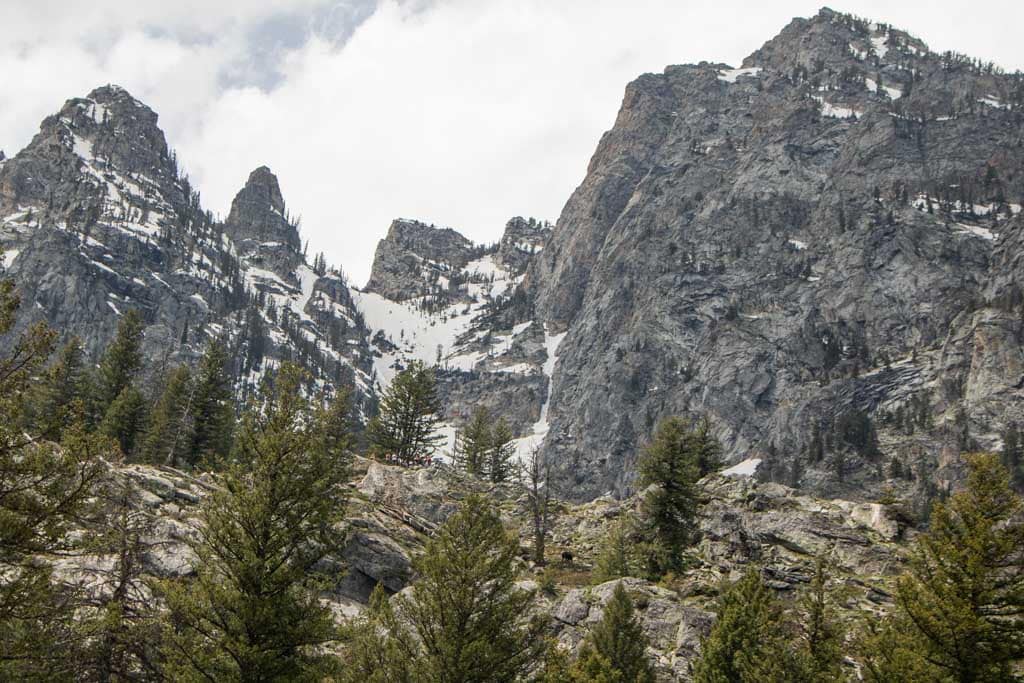
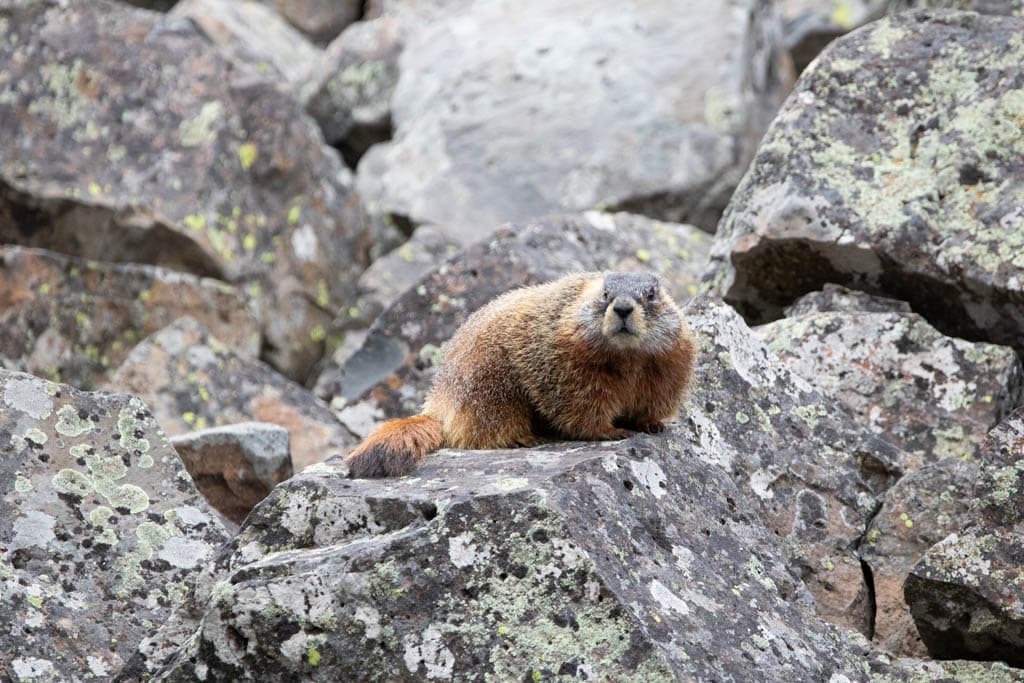
Cascade Canyon is one of several glacially carved canyons in Grand Teton National Park. Located on the west side of Jenny Lake, this spectacular canyon is accessible either via the Jenny Lake shuttle boat or on foot via the Jenny Lake Trail.
At the mouth of Cascade Canyon, you’ll find popular tourist attractions like Hidden Falls and Inspiration Point.
This area is also home to many golden-mantled ground squirrels, which are habituated to people and often come right up to you, begging for scraps of food. Do not feed them.
Elsewhere in Cascade Canyon, you might spot a pika or yellow-bellied marmot, while you can hear various songbirds singing their, well, songs all throughout this rugged landscape.
Moose and mule deer browse on shrubs and shoots at the mouth of the canyon. Grizzlies roam the backcountry.
6. Teton Park Road Between Jenny Lake and Signal Mountain
- Look for: elk, pronghorn, red foxes, black bears and grizzly bears, sage grouse and dusky grouse
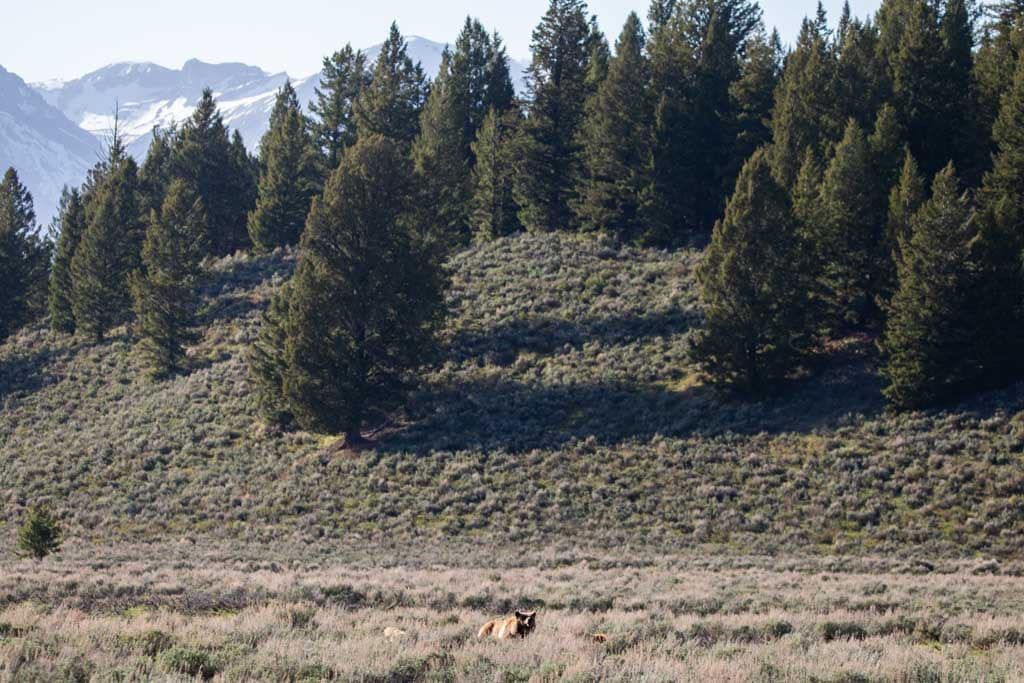
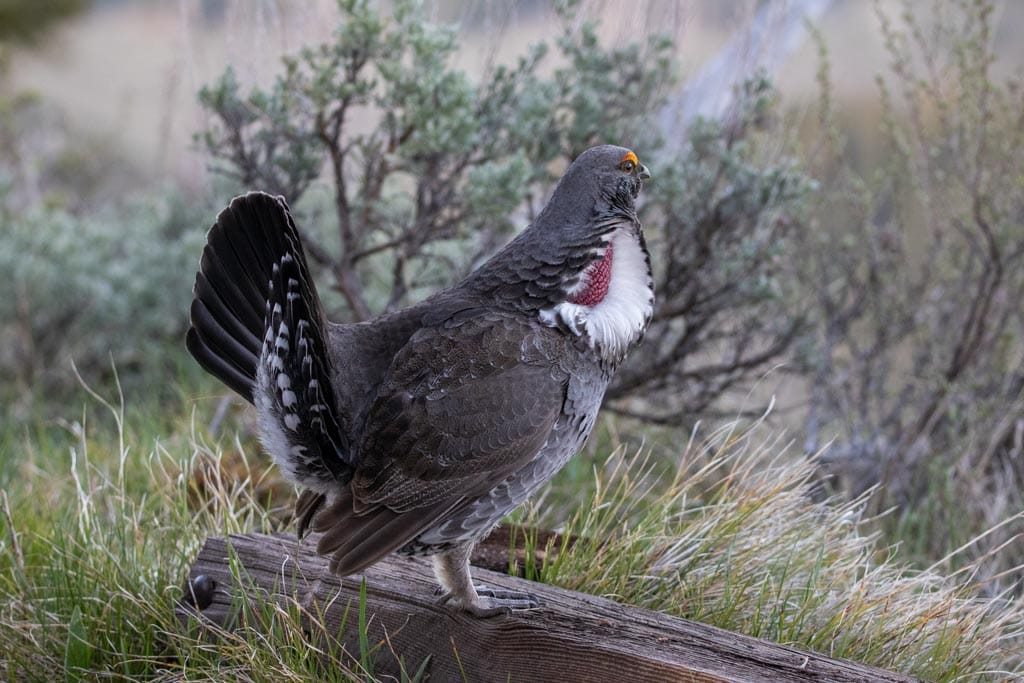
The section of the Teton Park Road between Jenny Lake and Signal Mountain is also one of the greatest places to see wildlife in Grand Teton National Park.
During our visit to the park, I drove this stretch close to ten times, both on the way to hikes or attractions and specifically to see some Grant Teton wildlife in the morning.
Let me say, though, that you don’t need to drive the Teton Park Road that many times to see animals! You’re almost guaranteed to see some animals on any drive on this road.
I saw elk and pronghorn almost each time, a moose once and grizzly bears several times, including famous grizzly 399, who has her very own Wikipedia page, and her cubs.
In the Signal Mountain area, I also spotted a red fox and a couple of dusky grouse, which aren’t exactly high-profile animals, but still amazing to add to the list.
My point is that driving the Teton Park Road is something you’ll do anyway—it’s a highlight on its own, lined with a number of turnouts and viewpoints. You might as well take your time and do it more than once.
Consider staying at Signal Mountain Lodge during your stay in Grand Teton National Park. There are a campground and numerous cabins, as well as a gas station, restaurant and store. It’s a great base to explore the park and super-close to many attractions, too.
7. Willow Flats Overlook
- Look for: sandhill cranes, elk, moose and grizzly bears
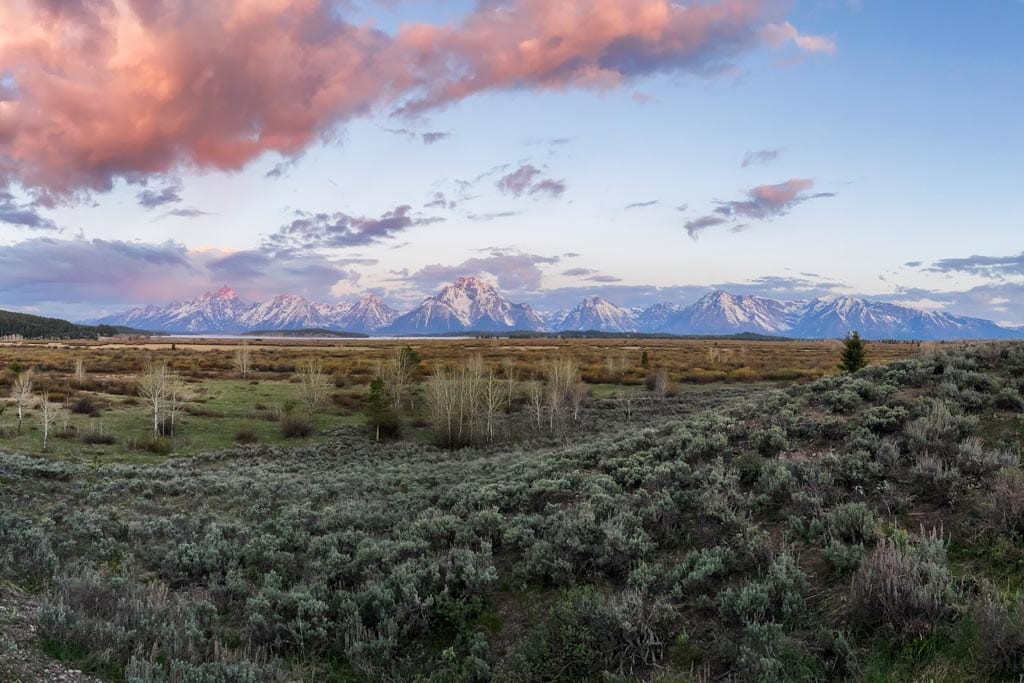
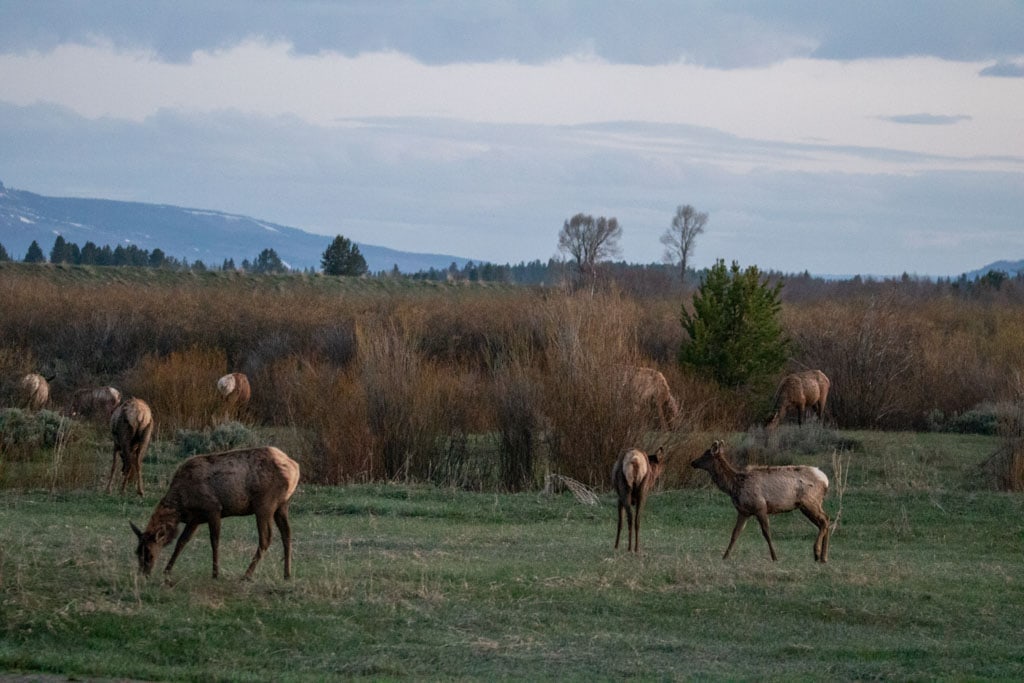
Located just north of Jackson Lake Junction, the Willow Flats Overlook is one of Grand Teton National Park’s most popular overlooks.
From the roadside parking lot or pullout, you can enjoy a wide panoramic view of the majestic Teton mountains, while the sprawling willow flats extend before and below you.
These patches of willows, sagebrush, other vegetation and open clearings are prime wildlife habitat. Around sunrise, you’re pretty much guaranteed to see herds of elk in this area.
Moose occasionally wander through and browse the willows, while grizzly bears are active here as well. In fact, the Willow Flats beyond the overlook boundary are closed to foot traffic due to bear activity in spring.
When the area is open to hikers, you can hike between Willow Flats and nearby Jackson Lake Lodge, a nice jaunt through one of Grand Teton’s finest landscapes. Remember to bring that bear spray, though. Bear encounters are common here.
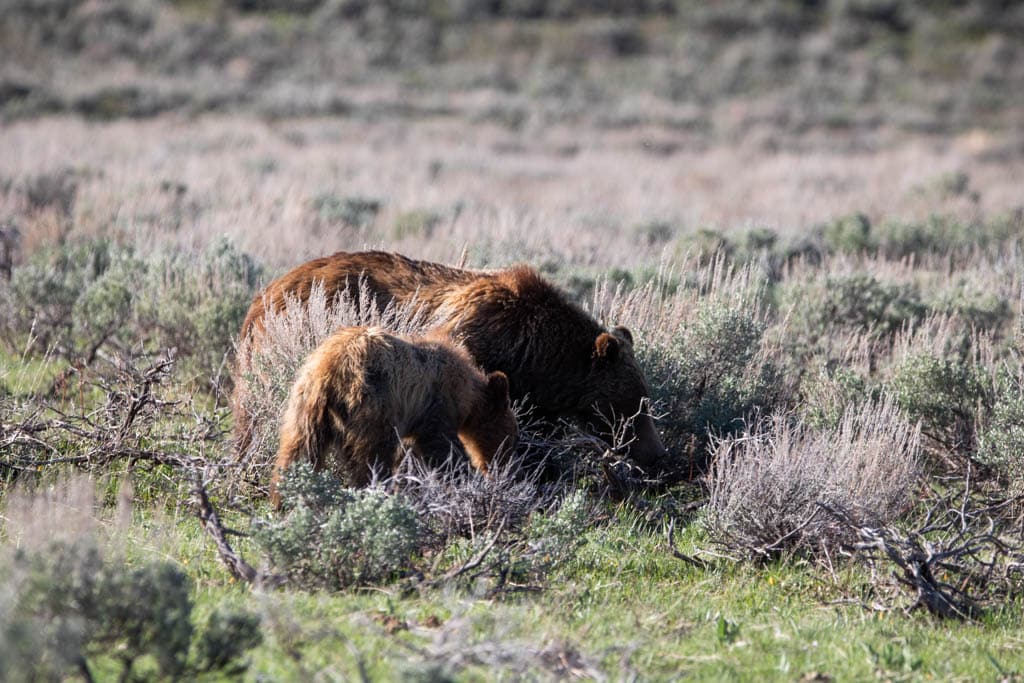
More About Grand Teton National Park
- Park Website
- Travel Guide
- Topographic Map
- Best Grand Teton Hikes
- Top Things To Do in Grand Teton National Park
- Where to See Wildlife in Grand Teton National Park
- Best Views of the Tetons
- Names of Major Teton Range Peaks (With Photos)
- Accommodation
Staying Safe While Watching Wildlife in Grand Teton National Park
Just like other national parks in the Rocky Mountains, particularly Yellowstone National Park and Glacier National Park, Grand Teton is home to many large animals. From moose and elk to bison and bears, all of them are potentially very dangerous.
To keep both yourself and the animals safe when visiting Grand Teton National Park, it is critical that you follow the park’s guidelines and regulations.
These really aren’t difficult to understand, yet people ignore them every year and get seriously hurt or even die from wildlife encounters. For example, did you know that moose hurt more people than bears every year? And there’s a lot of moose in Grand Teton National Park!
- Stay at least 100 yards away from bears and wolves, and minimum 25 yards from all other wildlife.
- Never approach a wild animal.
- Use binoculars, a spotting scope or telephoto lens to observe and/or photograph animals.
- Always carry bear spray! Learn how to use bear spray correctly here.
- If your presence causes an animal to move or react, you’re too close. Move away.
- Park in roadside pullouts to watch wildlife. Always make sure all wheels are completely off the road.
Remember these guidelines when you’re at these places for wildlife watching in Grand Teton National Park. As I said above, even busy areas like Jenny Lake are home to potentially dangerous wildlife.
Refer to the safety guides below for more information about observing and hiking among wildlife in Grand Teton National Park.











